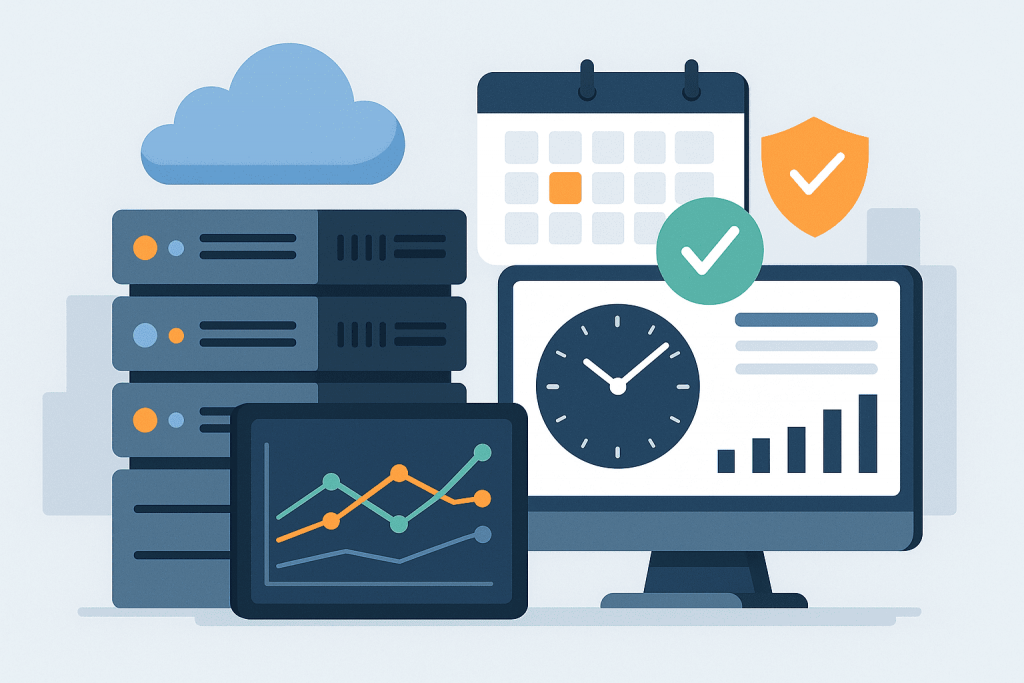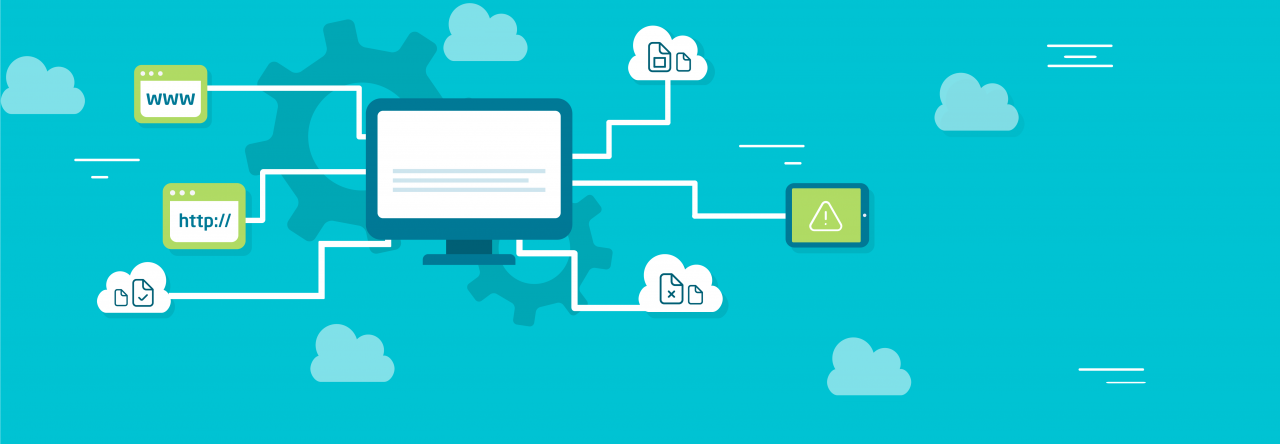
Continuous uptime is the backbone of trust for any online project. A server that crashes overnight or throws critical errors without alerts can cost you not only customers but your reputation as well. To avoid this, implementing 24/7 server monitoring is a must.
In this article, we’ll look at the best monitoring solutions — from full-featured systems like Zabbix and Prometheus to cloud-based services like UptimeRobot. You’ll learn how to choose the right tool for your VPS or dedicated server, which metrics to track, and how to automate alerting and incident response.
Why Server Monitoring Is Essential
Most server incidents occur outside of business hours: CPU overload, disk overflow, database failure, DDoS attack. If you don’t detect the issue in time, your website or app could remain offline for hours or even days.
Monitoring allows you to:
- Detect problems before they impact users.
- Automatically send alerts (email, Telegram, Slack).
- Analyze real-time server performance.
- Optimize resource usage (CPU, RAM, bandwidth).
- Meet SLAs and internal availability targets.
A server without monitoring is like a car without a dashboard: it works until something breaks. This is especially critical if you’re using an unmanaged VPS or rented server, where full responsibility for stability lies with you.
Which Metrics Should You Monitor?
Basic metrics:
- Availability (ping, HTTP response)
- CPU load
- Free RAM
- Disk space usage
- Network traffic
- Temperature readings (if supported)
Advanced metrics:
- Status of critical processes/services (nginx, apache, mysql…)
- Requests/responses per second
- SSL certificate expiration
- Website content changes (to detect hacks or defacements)
Zabbix — The Most Powerful Free Solution
Zabbix is an open-source monitoring system with a wide range of features. While it’s ideal for large infrastructures, it also works great for a single server.
Key Features:
- Flexible data collection (via agent or SNMP).
- Graphs and dashboards for visual analysis.
- Event triggers and response actions.
- Integrations with external services: Telegram, Slack, Email.
Drawbacks:
- Complex to set up initially.
- Requires a separate database and server.
Zabbix is perfect if you manage multiple servers and want centralized control. If you host several projects on a single VPS — it’s a reliable and scalable solution.
Prometheus + Grafana — A Modern DevOps Approach
Prometheus is another powerful open-source tool, built specifically for metric collection. It’s often paired with Grafana for data visualization.
Advantages:
- High-speed time-series database.
- Easy to scale.
- Plugins for popular platforms (Linux, Docker, Kubernetes).
- Clean and understandable YAML configuration.
Prometheus is ideal for DevOps teams that use CI/CD and container-based architectures. But even a single VPS can benefit from it using tools like Node Exporter.
UptimeRobot — Simple Cloud Monitoring
UptimeRobot is a cloud-based service that monitors websites and IP addresses externally.
Features:
- Checks availability every 1–5 minutes.
- Alerts via email, SMS, Telegram, Slack.
- No coding or setup needed.
- Public status page functionality.
Free Tier:
- Up to 50 monitors.
- 5-minute check interval.
- 3 months of log history.
UptimeRobot doesn’t require installation — just enter your server IP or website URL. It’s great for monitoring client projects, APIs, SSL certificates, or ports.
Other Useful Tools
- Netdata — local monitoring with real-time charts and auto-configuration.
- Pingdom — premium solution with detailed reports and performance analytics.
- StatusCake — alternative to UptimeRobot with more features.
- HetrixTools — includes blacklist monitoring and email reputation checks.
How to Choose the Right Tool
| User Type | Recommended Tool |
| Beginner with 1 website | UptimeRobot, Netdata |
| Multiple VPS owner | Zabbix, HetrixTools |
| Developer or DevOps | Prometheus + Grafana |
| Hosting provider/company | Zabbix, Pingdom (paid) |
If you’re using a VPS or dedicated server, the best approach is to combine internal monitoring (Zabbix, Prometheus) with external monitoring (UptimeRobot, Pingdom). That way, you cover both system performance and real-world availability from different regions.
Conclusion
24/7 monitoring is a crucial component of any modern server infrastructure. It helps detect and resolve issues before they become critical and provides transparency for tech teams, businesses, and clients.
A properly configured monitoring system isn’t a waste of time — it’s an investment in reliability, performance, and trust. And the best part? Most of the tools are free or offer generous free tiers.
Want complete control over your server’s health? Start with a VPS server with full root access, install your preferred monitoring tool — and stay informed about your infrastructure, day or night.

Leave a Reply